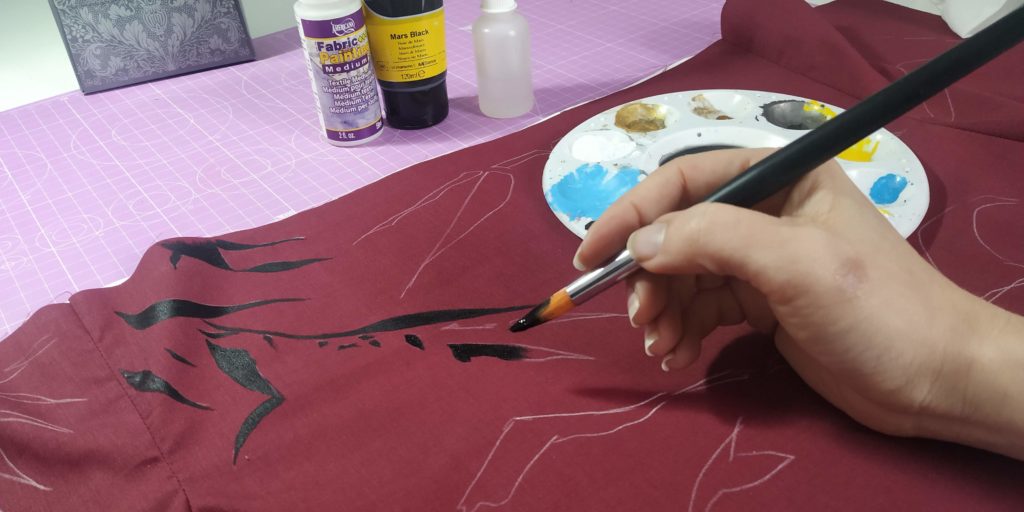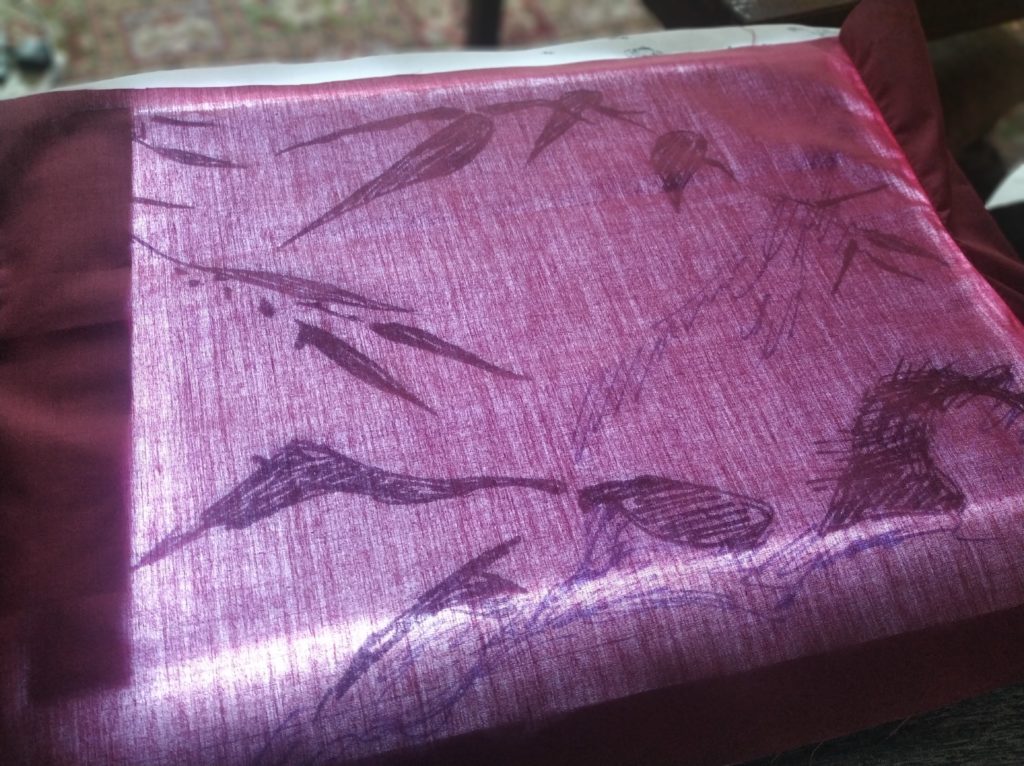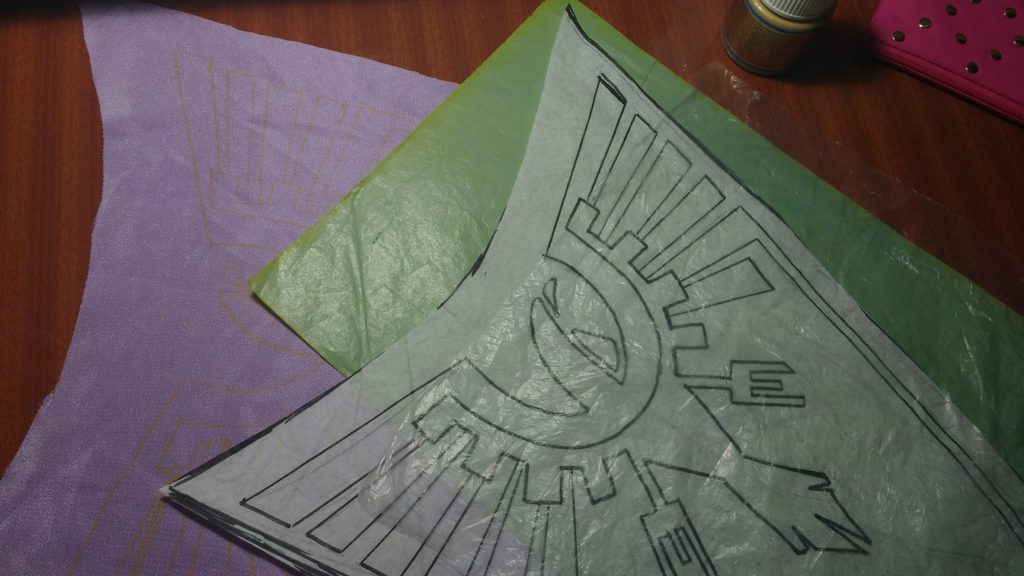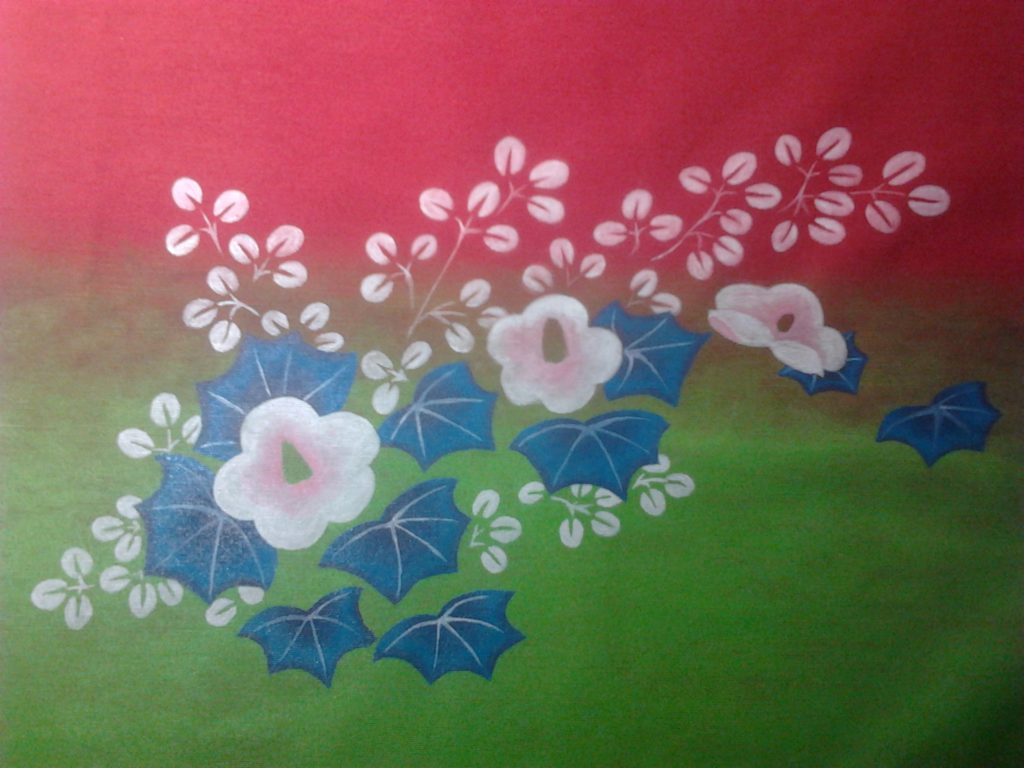Painting fabric is actually very easy, it just takes time as you spend much more paint on it than with other materials. There is no real mistery to it, just a bit more patience as your fabric will absorb the paint quicker and you will need more product to cover small areas. Here you have my best tips for painting fabric I have learnt through the years making mistakes.

Sometimes it is difficult to find the pattern or details you want for your fabric and your only solution is to paint it. If you follow my advice it shouldn’t be difficult to get good results on your fabric and it will make it stand out. In this article I am going to cover how to traditionally paint your fabric with a brush, but remember that you can also use stencils, sprays or even print your design on an iron on
Painting fabric tips
These are just some ideas that I have picked up through the years. Once you get used to it I am sure you will get many others. Always try to do what’s more comfortable to you while painting fabric. Be aware that for a perfect finish you will want to be prepared.
Before you start
- Decide on your fabric. Some fabrics are easier to paint than others. Canvas and cottons are some of the best ones. Stretch fabric will be more difficult to paint and the designs will last less time. You can always paint your design on canvas and use it as an applique if you need to.
- Wash your fabric before painting it. I don’t always follow my own advice as my cosplays are so delicate I usually handwash them and only use them a few times. However, for a lasting finish you may want to wash your fabric. All fabrics come with some kind of starch from the factory that protects them from dust and impurities. If you want your paint to last it is better to wash it.
- Sketch your design on paper first. Always design your drawing before painting it. Preferably don’t sketch directly over your fabric. You won’t be able to fix mistakes later and any pencil lines will be very visible if you commit a mistake.
- A lightbox or tracing paper are good ideas to trace the design. Once you have your design you will want to transfer it to your fabric. If your fabric is thin enough you may be able to use a lightbox to reproduce your sketch. If it is too thick you can trace it with tracing paper on top of your fabric. Keep in mind that any mistakes will show trough, use a similar colour to your finished product. Dressmaking pens are the best idea but you won’t always be able to use them.
- Protect the area underneath your fabric. Paint is very likely to soak through fabric and you don’t want to stain your working space. Preferably put plastic under the fabric, not paper. The paper may stick to your fabric and stain the back of your painting. It becomes messy. Keep in mind that if you are painting for example a t-shirt you will need to place your protection inside it, so it doesn’t soak to the back.
- Test a scrap of fabric before you start. You will be able to practice and determine what is best for your painting. You may need to thin some paints with water but be careful not to overdo it or they will stain the fabric. This is your chance to test the right consistency and the look of your paint over the fabric.
Painting your fabric
- Use fabric paint. You can also use acrylics but they may crack in larger areas. If you can’t find the right colour try adding fabric medium to your acrylic paint. It works the same as a fabric paint which makes your paint more elastic. Some fabrics like silk are very different to normal fabric and may need totally different techniques.
- Use the correct brush for your design. The quality of your brush matters and a good brush will help you do the task better. Use large brushes for big areas and small brushes for tiny parts. Don’t be afraid to change often. A flatbrush works great for straight shapes and a fine point will help outline any painting. I find it easier to work from the outside inwards.
- Paint from left to right and from top to bottom (reverse if you are left-handed). You will avoid stains on your arm and hand and won’t smudge your paint if you do this. Be careful on where you place your hands and wash any stains immediately to avoid accidents. Fabric soaks the paint and keeps the material wet for long periods, be careful not to touch or smudge it.
- Apply at least 2 layers. Ideally you want two layers for every colour but light ones will be the more obvious. They are more see-through and need building up to look good. Make sure you wait and let your paint dry between each layer. Also, if your colour is not showing through, try applying a first layer of white to the area to get more vibrant colours. Always test before you commit.
- Clean your brushes often. You should at least clean them for different colours. Otherwise, your paint will get mixed. Also, your paint will start drying on your brush after a while and will make it difficult to use.
- Try gradients and outlining your paintings. They give them extra volume and they look much better. For a gradient you may need to mix the paint while it is still wet. Cleaning your brush on a paper towel will get the excess of paint from your brush and will create a fading effect when you dab it on the fabric. A very fine line around your painting will make it stand out too. Don’t be afraid to experiment.
After you have finished
- Allow time to dry. Even if you think your piece is ready, allow extra time to make sure it is completely dry. You don’t want a nasty surprise and stain your fabric or another piece.
- Iron your finished piece. You can put a cloth on top and iron it after it is dry. Most fabric paints recommend you to iron the paint so it sticks better to your fabric. Always follow the instructions of the bottle.
- Handwash your painted garments. Although you can put them in the washing machine they will last longer if you gently wash them with some soap and hang them from a line to dry.
I have used these methods for cosplays like Ignis, Emilia, Ran Mao, Raven or Koujaku. It shouldn’t be difficult to start painting your own projects. However, it does take practice as well as trial and error to improve.

I hope my best tips for painting fabric helped you, let me know if you have any others! And if you are stuck for new ideas to sew, make sure you check my pattern collection. If you liked this article and want to give me your support to keep me going consider supporting me on Ko-fi, it all goes to new projects and there is no subscription needed!







